#larry sloman
Text
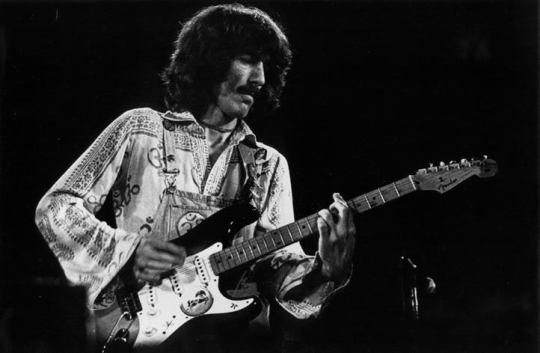
The Dark Horse Tour Rolling Stone article/review and its aftermath...
“If you get depressed, you start agreeing with them. If you start agreeing with them then you just go and do yourself in. But I’m, I wouldn’t do that because enough things happened to prove that it’s not exactly how they see it, you know. I mean, one situation with the rock press, for example, was one guy who came to write an article because he disagreed with another article that had been written in his paper. And so he said, ‘I’ve seen, you know, seven of these concerts and I disagree, and I want to write it from my point of view.’ Then his article came out and it was not really good at all, and I thought, well, he was just, just cheating me, you know, just to get in to talk to me. But then he wrote a letter to me and sent what he wrote, and to compare that to what they printed, he said they just cut it out, they just cut out any favorable references to the music or to the response from the audience. [...] These people… who supposedly loved me and I’m supposed to love them, and I see them, they’re just dropping apart at the seams with hate. This is… I’m talking about Rolling Stone, actually, talking about Jan Wenner.“ - George Harrison, radio interview, August 1975
“[Larry] Sloman was so upset he sent Harrison the original unedited draft of the story, to which Harrison responded, according to Sloman, ‘I’m glad you sent me that article, Larry. I thought you were an asshole and then I realized that it was Rolling Stone that was the asshole.‘“ - Sticky Fingers: The Life and Times of Jann Wenner and Rolling Stone Magazine (x)
“I was told George Harrison was reluctant to be included in Rolling Stone’s 25th anniversary portfolio in 1992—something about a mixed review of his 1974 album Dark Horse. He eventually agreed to a quick, simple portrait, but I wanted so badly to win him over. I knew he was an avid gardener and I had a deep appreciation of Paul Caponigro’s photographs of sunflowers, so I planned to bring some. A few days before our session, I did a shoot with Tom Petty for the same issue. When I told him George was on the fence, he said that the way to win George over was to bring ukuleles.
I brought 5. George was quiet but a willing participant. And after the shoot was over, as a gift, he picked up the Martin ukulele and played 20 minutes of Hawaiian love songs for us. The entire team sat down and listened to him. When we were finished, he turned to me and said ‘we’ll meet someday on the avenue,’ and headed to his car with the ukulele—which happened to be the most expensive one. When I told him it was a rental, he said with a wink, ‘You can bill Jann Wenner,’ Rolling Stone’s editor-in-chief.” - Instagram, February 26, 2021 (x)
#George Harrison#Jann Wenner#Larry Sloman#Rolling Stone#quote#quotes about George#quotes by George#1974#1975#1992#1970s#1990s#Mark Seliger#...karma *cough* Wenner. karma#Tom Petty#Harrison ukulele#fits queue like a glove
75 notes
·
View notes
Photo

Sam Shepard, Larry “Ratso” Sloman, Bob Dylan, and David Meyers, Greenwich Village, NYC, 1975.
#Sam Shepard#Larry Sloman#Ratso#Bob Dylan#David Meyers#The Rolling Thunder Revue#Rolling Thunder Revue#Greenwich Village#NYC#1975#1970s
54 notes
·
View notes
Text

Infinite list of favourite lyrics: 222/?
John Cale - Dying on the Vine (1985)
"Who could sleep through all that noisy chatter?
The troops, the celebrations in the sun.
The authorities say my papers are all in order
And if I wasn't such a coward
I would run.
I'll see you when all the shooting's over;
Meet me on the other side of town.
Yes, you can bring all your friends along for protection,
It's always nice to have them hanging around.
I was thinking about my mother,
I was thinking about what's mine.
I was living my life like a Hollywood,
But I was dying, dying on the vine."
#favourite lyrics#john cale#dying on the vine#larry sloman#1985#artificial intelligence#coming at a time of intense productivity (recording three albums in a little over a year‚ as well as producing work by former bandmate Nico#and others) as well as professional frustration‚ as his sparse experimental work failed to gain a popular audience‚ Artificial Intelligence#was a sort of last stab at commercial releasing for Cale; returning to a more accessible pop sound characterised by drum machines and synth#overlays‚ Cale worked with a cowriter‚ Sloman‚ to produce typically avant garde music within a more radio friendly framework#the result wasn't particularly successful‚ and afaik this first single from the album didn't even chart here in the uk#a pity‚ because I'd count it among his very best works (and I'm not alone; the song has had a slow reappraisal and is now generally#considered one of his finest of this era). a despondent‚ gloomy study of one man's annihilation‚ draped in several layers of allegory;#the vine can be read as a fairly literal metaphor (fruit left too long without harvest spoiling)‚ or as a reference to his then home on the#intersection between hollywood blvd and vine street in LA‚ a then rundown area rife with drug abuse and criminal activity; or as a nod to#Cale's struggles with alcoholism in this period (as well as a cocaine habit; his daughter was born soon after the release of this album‚ as#a result of which he retreated from the music business for a while and kicked his addictions).#some have pointed to the quoted verse‚ apparently about an authoritarian state‚ as being inspired by Cale's love of the literature of#Graham Greene‚ and there are some other parallels earlier in the song; mostly tho this is about a moment of crisis‚ of Cale at rock bottom#surveying where he was at in his life at that point and realising he needs to change (just as possible to read the authoritarian state as#every day life‚ with the troops regular people living their noisy lives around him and Cale's temptation to 'run' as a metaphor for suicide#who knows. whatever he's saying‚ there's an awful‚ beautiful melancholy to the near lilt in his voice as he ponders 'I was thinking#about my mother..' an incredible work from an under appreciated artist who‚ happily‚ beat his demons and stayed sober
5 notes
·
View notes
Text



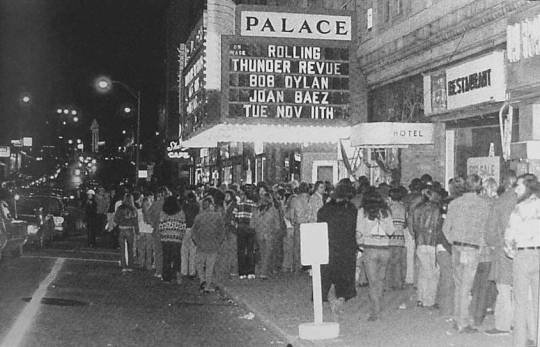
Yesterday I bought my ticket for my fifth and final Bob Dylan concert. It'll be at the Palace Theater in Waterbury, Connecticut on November 11, 2023. That date and venue are significant because that's the same place he performed on that same date during The Rolling Thunder Revue in 1975.
"So I showed up at Waterbury. It was this beautiful theater, the Palace Theatre, in downtown Waterbury. It was like an old Art Deco theater, small, maybe 2,000, 3,000 seats. I was getting settled in when Allen Ginsberg comes out. My first piece for Rolling Stone had just been published, so Ginsberg says, “Do you have a copy of it with you? Bob wants to read it.” I gave it to him and he goes backstage. Then I start watching the show.
I think it was intermission. Lola, the actress comes out with Ginsberg, and says, “Bob is really pissed at you.” I said, “Why? What's the matter?” She says, “He doesn't dig it that you're putting down Ronee Blakley.” And I said, “What are you talking about? I'm not putting down Ronee Blakley!” Then I realized I called her the "Nashville neurotic.” I put it in italics, because the role she played in Nashville was of a neurotic country singer. Ginsberg and Lola run back and start explaining it to Bob. At some point, Lola comes back out from the backstage area and comes to where I was sitting and gives me a big thumbs up sign.
By then, I'm watching Dylan. Right after “One More Cup of Coffee,’ the crowd dies down. Dylan turns to the audience, and he starts strumming the first chords to “Sara,” which was one of my favorites. I think I had told Bob that. All of a sudden, I hear him say, “We're going to send this out to Larry. He's out there somewhere.” Some of my friends were actually in the audience and they start squealing, “Larry! Larry!” And Bob goes, “He's our favorite reporter. He tells it like it is.” And then he went into “Sara.”
I was just gobsmacked. Not only was he not mad at me, but he said such nice things about me. In fact, when the tour was over, I made business cards. They were folded in half at the front. It was my info and you open it up and it says, "Larry's our favorite reporter. He tells it like it is." - Bob Dylan, 1975. And underneath it says, "I like you, Larry, but you're outta control." -Louie Kemp, 1975."
—Larry "Ratso" Sloman, "On The Road with Bob Dylan"
#Bob Dylan#2023#Waterbury#Connecticut#CT#Palace Theater#The Rolling Thunder Revue#Rolling Thunder Revue#Larry “Ratso” Sloman#Larry Sloman#On The Road with Bob Dylan#Ken Regan
1 note
·
View note
Photo

HALLELUJAH: LEONARD COHEN, A JOURNEY, A SONG (2022)
Featuring Brandi Carlile, Eric Church, Judy Collins, Sharon Robinson, Regina Spektor, Rufus Wainwright, Nancy Bacal, Steve Berkowitz, Adrienne Clarkson, Clive Davis, Shayne Doyle, Susan Feldman, Rabbi Mordecai Finley, Glen Hansard, Dominique Issermann, Vicky Jenson, Myles Kennedy, John Lissauer, Janine Dreyer Nichols, Amanda Palmer, Larry 'Ratso' Sloman, Joan Wasser, Hal Willner and archival footage of Leonard Cohen, John Cale, Bob Dylan and Jeff Buckley.
Directed by Daniel Geller and Dayna Goldfine.
Distributed by Sony Pictures Classics. 115 minutes. Rated PG-13.
“It was [the] trajectory that made me interested in exploring the song. I cannot think of another song that had a comparable experience. Anything that's up in that altitude, songs like ‘Bridge Over Troubled Water’ or ‘Imagine,’ people got right away that those were important songs. They were big hits. Obviously, their meaning changed over time, but there was this huge splash and then everybody was aware of them. ‘Hallelujah,’ when Leonard turned in the album the song was on, his label rejected it. Columbia didn't put the album out. Then when it came out on an indie label a little later, nobody noticed the song. The review in Rolling Stone was a nice review, but it didn't mention ‘Hallelujah.’ So this song starts not just under the radar, but way off the radar. No one knew it was there. It's the fact that it [appeared] slowly but surely. It was never a hit. It was never one thing where everybody discovers this song. It was a gradual build of momentum that kind of snowballed, in fact, from different covers and different versions and different uses.”
This was the explanation that music journalist Alan Light gave me in 2013 when we were discussing his then-new book The Holy or the Broken: Leonard Cohen, Jeff Buckley & the Unlikely Ascent of "Hallelujah," which was an in-depth examination of the slow rise of the song to iconic status.
The new documentary Hallelujah: Leonard Cohen, A Journey, A Song was inspired by that book (Light is one of the producers of the film as well as one of the consultants about the subject), although it takes a slightly different tack than the tome. Light made a point to make the narrative about the strange journey of the song, not spending more than a chapter or two of its time specifically on the creator. (“The book could have gotten too top-heavy as a Leonard and Jeff [Buckley] co-biography,” Light explained to me at the time.)
While the film does explore the strange path that the song took to becoming a musical standard, the film is more of a straight biography of singer-songwriter Cohen which periodically swerves into different directions about other uses of the tune.
And you know what? That’s okay. Leonard Cohen’s life is endlessly fascinating. I’m all in, either way.
Which is not to say that there is not enough just in the one song. “Hallelujah” was an ongoing work in progress for years, with the songwriter tinkering with the lyrics long after he had originally recorded the song. In fact, he supposedly had written 180-some verses of the song over the years.
It seeped into the public consciousness slowly. First off, Bob Dylan took to occasionally covering the song in concert. Then former Velvet Underground member John Cale did a reworked version on a Leonard Cohen tribute album. It was that version that led to the recording which may have opened the floodgates – singer Jeff Buckley’s recording of the song on his debut album Grace was based on Cale’s version, he had never heard the Cohen original.
Since then, the song has been used in multiple different ways. Anytime there is a huge celebration someone sings it. Anytime there is a great tragedy, someone sings it. It has been used at sporting events, at weddings, at funerals. It is a staple on TV music reality competition shows. It has been recorded in dozens of holiday albums – even though other than the title and some religious imagery there is nothing even the least bit “Christmas-y” about it. It was even used in Shrek.
While it is undoubtedly Leonard Cohen’s best-known song, it is not necessarily Leonard Cohen’s best song. (And this is coming from someone who loves the song.) Therefore, the film Hallelujah does the public service of opening up significantly more of Cohen’s body of work to fans who may know only the one song.
It also gives us a fascinating ride-along on the very unusual pathway of Cohen’s career. He started as a poet and acclaimed novelist who didn’t even start in music until his 30s, at which point he was probably a little old, a little rich, and a little well-dressed for the hippy summer of love lifestyle he was entering. Still, Cohen was an unusually thoughtful and philosophical man with a sterling sense of language, a man who was able to sustain a career for over 40 years without once having a real hit single.
He was the type of man who would put his life on hold for six years just to take a spiritual retreat at a Buddhist monastery. He was a man who lived in the same home for decades, even when he could afford to move someplace much nicer. He was the kind of man who was so unworried about the material that he didn’t even notice that his manager had stolen all of his money. And he was the kind of man who when that happened, he just hit the road for the first time in decades, touring for years and not only making back all the money he lost, but also revitalizing his career to the point that when he died in 2016, he was probably more respected as an artist than he ever had been.
“Hallelujah” was a big part of the story, but it was not the whole thing. The movie Hallelujah: Leonard Cohen, A Journey, A Song tells even more of that story. After all, as the guy himself said in his song “Anthem,” “There is a crack in everything. That’s how the light gets in.” The world is a better place because this movie is letting in the light.
Jay S. Jacobs
Copyright ©2022 PopEntertainment.com. All rights reserved. Posted: July 1, 2022.
youtube
5 notes
·
View notes
Photo
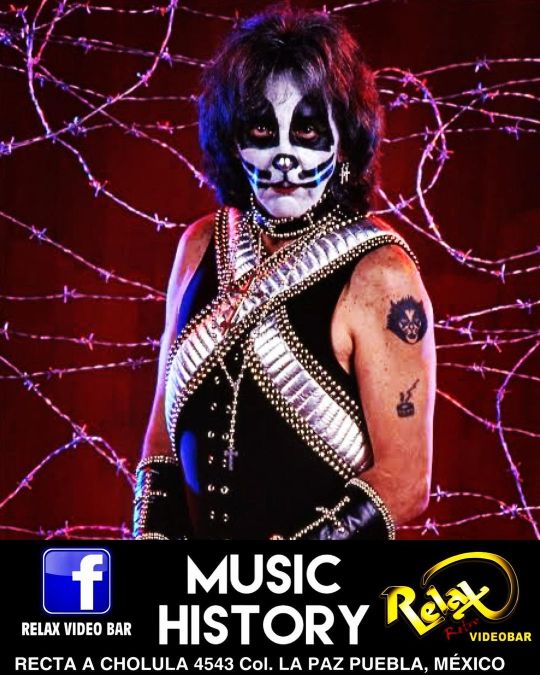
Sabías que, hoy cumple 77 años el músico y productor estadounidense Peter Criss nacido en Brooklyn y conocido por ser miembro fundador, vocalista y baterista de la banda Kiss. Famosos por su apariencia escénica y sus llamativos maquillajes que influyeron a numerosas bandas posteriores, Criss adoptó el personaje de 'El Hombre Gato' ya que consideraba poseer siete vidas como los felinos para haber podido sobrevivir como adolescente en las calles de Brooklyn. Permaneció en la banda hasta 1980 participando en la grabación de los ocho primeros álbumes, aunque en 'Unmasked' solo apareció en los créditos, grabando Anton Fig las pistas de batería. Fue coautor y vocalista de la balada ‘Beth’, que fue top10 en el Hot100 en 1976. Además de su álbum 'Peter Criss' de 1978, mientras aún era miembro de la banda, en los años ochenta publicó dos más, 'Out of Control' y 'Let Me Rock You', con escaso éxito comercial. El resto de la década tocó en grupos de duración efímera y escasa repercusión como The Alliance, Balls of Fire y The Tree y a comienzos de los noventa fundó la banda Criss con la que grabó su cuarto álbum, 'Cat#1'. Peter Criss se reincorporó a Kiss en 1995 para la gira de reunión de la formación original y los Kiss originales lanzaron el álbum 'Pyscho Circus' (1998). Sin embargo, volvió a suceder algo parecido a 'Unmasked', Criss solo tocó en la canción ‘Into the void’, mientras que Kevin Valentine tocó la batería en el resto de temas sin aparecer acreditado. Tras un nuevo abandono de la formación en el año 2000 y un regreso en 2003 para la grabación de directo 'Kiss Symphony: Alive IV', en marzo de 2004 dejó definitivamente la banda. En la actualidad, es el batería Eric Singer quien ha adoptado en Kiss la identidad y el maquillaje de Peter Criss. En 2008 el hombre-gato gastó otra de sus vidas sobreviviendo a un cáncer y en octubre de 2012 se publicó su autobiografía coescrita con Larry Sloman: ‘Makeup to Breakup: My Life In and Out of Kiss’. En marzo del 2017, anunció su retiro definitivo del los escenarios. @relaxvideobar www.relaxvideobar.com https://www.instagram.com/p/CmaJQ5MMn97/?igshid=NGJjMDIxMWI=
0 notes
Photo

HALLELUJAH: LEONARD COHEN, A JOURNEY, A SONG (2022)
Featuring Brandi Carlile, Eric Church, Judy Collins, Sharon Robinson, Regina Spektor, Rufus Wainwright, Nancy Bacal, Steve Berkowitz, Adrienne Clarkson, Clive Davis, Shayne Doyle, Susan Feldman, Rabbi Mordecai Finley, Glen Hansard, Dominique Issermann, Vicky Jenson, Myles Kennedy, John Lissauer, Janine Dreyer Nichols, Amanda Palmer, Larry 'Ratso' Sloman, Joan Wasser, Hal Willner and archival footage of Leonard Cohen, John Cale, Bob Dylan and Jeff Buckley.
Directed by Daniel Geller and Dayna Goldfine.
Distributed by Sony Pictures Classics. 115 minutes. Rated PG-13.
The Documentary Hallelujah: Leonard Cohen, A Journey, A Song Celebrates The Late Singer/Songwriter’s Poetic Hit
I’ll admit it. It wasn’t until the 82-year-old Leonard Cohen had died in 2016 (November 7th) did I really start paying attention to the fantastic quality of his music and lyrics. There were songs and albums that I acknowledged but, somehow, I didn’t quite get the body and breadth of this Canadian Jewish poet. The richness of his songs and the substance of his lyrics hadn’t fully caught my attention until after his death.
I never made it to a concert nor had an opportunity to interview him. I only encountered him tangentially. There was an interactive exhibit dedicated to Cohen’s life and career which opened on November 9, 2017, at Montreal's contemporary art museum (MAC) entitled "Leonard Cohen: Une Brèche en Toute Chose/A Crack in Everything.” The exhibit had been in the works for several years prior to the Montreal born artist’s death, part of the official program of Montreal's 375th anniversary. It broke museum's attendance records in its five-month run. Then it embarked on an international tour, opening in New York City at the Jewish Museum in April 2019 — and I saw it shortly before it left NYC spending hours there.
Thanks to guitarist/sound stylist Gary Lucas, I came to understand Cohen’s impact on other musicians. Lucas often spoke of the late Jeff Buckley —his former collaborator and one-time band mate. They worked on some songs together that appeared on Grace, Buckley’s one full studio-produced release. And the singer/songwriter really got established posthumously through a powerful and touching rendition of “Hallelujah,” Cohen’s most enduring song.
I had listened to Buckley’s version numerous times and, though I appreciated his heartfelt rendition, I didn't realize the huge back story to that song. Originally released on Various Positions — Cohen’s 1984 album — “Hallelujah” achieved little initial success. Then it developed a growing audience after achieving popular and critical acclaim through a version recorded by former Velvet Underground founder John Cale in 1991 for I'm Your Fan, a Cohen tribute album. That inspired Buckley to record his version of Cale's take in 1994.
I knew of author Alan Light’s 2012 book, The Holy Or the Broken: Leonard Cohen, Jeff Buckley, and the Unlikely Ascent of ‘Hallelujah.’ But it wasn’t until I recently saw ‘Hallelujah:’ Leonard Cohen, A Journey, A Song at the Walter Reade Theater (part of Film at Lincoln Center), that I came to understand what I’d been missing. Building on Light’s book, the feature doc spotlights Cohen in a way that offers a perspective on an artist who in many ways was as creatively significant as Nobel Prize winner Bob Dylan (who did a live version of the song himself and was friends with Cohen). As Light said somewhere, Cohen's "approach to language and craft felt unlike the work of anybody else. The sound was rooted in poetry and literature because he studied as a poet and a novelist first."
Cohen kept changing the song, eventually crafting as many as 180 possible verses to choose from, recorded several iterations (some more sexually suggestive than others) and performed variations of it live. After an edited version of Cale’s take was featured in the 2001 film Shrek, it landed on the multi-platinum-selling soundtrack release. Many other arrangements of “Hallelujah” have been performed in recordings and in concert, with over 300 versions known. The song has since been used in other film and television soundtracks and televised talent contests such as American Idol. Following Cohen's death in November 2016, “Hallelujah” enjoyed renewed interest. It appeared on many international singles charts and entered the American Billboard Hot 100 for the first time.
But the film — directed by Daniel Geller and Dayna Goldfire — is much more than simply detailing the evolution of the song and Various Positions — the album it first appeared on. Cohen’s seventh studio album was released in December 1984 (and February 1985) and marked not only his turn to a more modern sound with synthesizers, but also featured Jennifer Warnes’ harmonies and backing vocals — she’s credited equally to Cohen as vocalist on all of the tracks.
Produced by John Lissauer, the album was a glistening display of Cohen at his basic best after having done 1977's Death of a Ladies' Man, an over-produced recording with Phil Spector (Mr. Wall of Sound). Although it featured a more contemporary approach compared with the singer's previous LPs, Columbia President Walter Yetnikoff didn’t think it was commercial enough and refused to release it in the States. That stuck in Cohen’s craw and affected his work for a long time.
All of this and much more is effectively detailed in the film. Interviews with those who knew him well such as Judy Collins (who popularized him through her 1966 cover of “Suzanne”) pop music chronicler Larry “Ratso” Sloman, Lissauer and others help establish who Cohen was and what informed his work such as his observant Jewish roots and the many women he had been with.
Said one of the film's co-creators in an interview, “Cohen addressed the deepest of our human concerns about longing for connection and some sort of hope, transcendence and acknowledgment of the difficulties of life."
As docs go, this one really does the job. While focused on the song as a doorway into who Cohen was, it sets us up for a fully realized story about an important creator.
Brad Balfour
Copyright ©2022 PopEntertainment.com. All rights reserved. Posted: July 2, 2022.
youtube
1 note
·
View note
Photo

@filmforumnyc Leonard Cohen spent over 7 years writing “Hallelujah,” initially an obscure track on an early 80s album rejected by his record label. The song enjoyed a new life in 1991 after being covered by John Cale, then Jeff Buckley -- and evolved through countless versions to become one of the most beloved songs of all time. Drawing from rare archival materials, Dayna Goldfine and Daniel Geller illuminate Cohen's career & the unlikely path of his famous composition in HALLELUJAH: LEONARD COHEN, A JOURNEY, A SONG – opening with us Fri, July 1. Catch in-person Q&As with author/consulting producer Alan Light and music writer Larry "Ratso" Sloman on opening weekend. (em Film Forum) https://www.instagram.com/p/CfKQJTxsmlL/?igshid=NGJjMDIxMWI=
1 note
·
View note
Audio
Ratso ft. Yasmine Hamdan - I Want Everything (2019)
2 notes
·
View notes
Photo
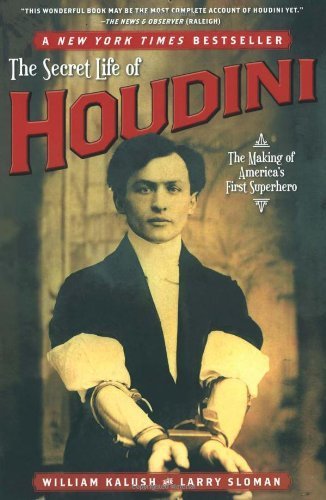
Happy Birthday Harry Houdini! 2007 PODCAST INTERVIEW with Larry Ratso Sloman by Bob Andelman
LARRY 'RATSO' SLOMAN podcast excerpt:"We don’t say for sure that we definitely think he was murdered, but we raise enough issues about it that Houdini’s grandnephew read the book and said, “I want to get to the bottom of this.” It means we would have to exhume his body and test for poisoning.”
https://mrmedia.com/2007/05/houdini-biographer-larry-ratso-sloman-writing-howard-stern-houdini-podcast-interview/
1 note
·
View note
Text
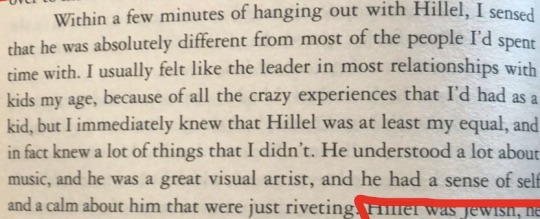
my best friend sent this to me and said it was how she felt when she hung out with me
0 notes
Photo

George Harrison, Dark Horse Tour, November/December 1974; photo by Alvan Meyerowitz.
“George was growing. The audience was growing, too. George was a bit ahead of them at that point. [...] George subliminally valued things. He was in touch with a deeper reality. It was in his nature to be an artist. What George saw, he put into music.” - Henry Grossman, Harrison
Q: “Did the pressures of being on the road bring you to Krishna?”
George Harrison: “You either go crackers and commit suicide or you try and use every incident in order to realize something and attach yourself more strongly to an inner strength.” - Crawdaddy, February 1977
“If you can just open your mind and heart, there's such joy in the world to be had.” - George Harrison, Rolling Stone, 19 December 1974 (x)
“After that ‘74 tour I got such a slagging off in the music papers or in the magazines, you know, it’s like they try… they smell blood, and they come in for the kill; they try to kill you and then they try to nail the coffin down, you know, the lid, so you never get out again. And I felt that kind of thing happening during the end of ‘74 into ‘75.” - George Harrison, In The Studio, 1992 (x)
“[Larry] Sloman was so upset he sent Harrison the original unedited draft of the story, to which Harrison responded, according to Sloman, ‘I’m glad you sent me that article, Larry. I thought you were an asshole and then I realized that it was Rolling Stone that was the asshole.‘“ - Sticky Fingers: The Life and Times of Jann Wenner and Rolling Stone Magazine
“If you get depressed, you start agreeing with them. If you start agreeing with them then you just go and do yourself in. But I’m, I wouldn’t do that because enough things happened to prove that it’s not exactly how they see it, you know. I mean, one situation with the rock press, for example, was one guy who came to write an article because he disagreed with another article that had been written in his paper. And so he said, ‘I’ve seen, you know, seven of these concerts and I disagree, and I want to write it from my point of view.’ Then his article came out and it was not really good at all, and I thought, well, he was just, just cheating me, you know, just to get in to talk to me. But then he wrote a letter to me and sent what he wrote, and to compare that to what they printed, he said they just cut it out, they just cut out any favorable references to the music or to the response from the audience.“ - George Harrison, radio interview, 24 August 1975
“[George] really took a beating, although some of it was self-inflicted. [...] He was being particularly hard on himself at that time.” - Olivia Harrison, Extra Texture 2014 remaster liner notes (x)
#George Harrison#quote#quotes about George#quotes by George#Dark Horse Tour#Dark Horse Tour 1974#Pisces Fish#George and fame#Harrison spirituality#George and Olivia#fits queue like a glove
60 notes
·
View notes
Quote
Joni, who had just finished her set, comes running up and hugs the poet. "Joni,” Leonard sizes up his Canadian counterpart, “Joni, my little Joni.”---“I’m glad you’re here, I just came off, though.” Cohen looks disappointed---By now, Neuwirth and Ronee have come over to pay respects, and Dylan, who’s about to follow Ramblin’ Jack, trots over. “Leonard, how you doing?” Bob warmly greets the Canadian. He points over at Ratso. “Hey, do you know this character?” Leonard rolls his eyes. “This man has plagued me for the last three years.” They all laugh. “Hey, Leonard, you gonna sing,” Ratso pleads. “Let it be known that I alone disdained the obvious support,” Cohen chuckles. “I’m going to sit out there and watch.” “Why not sing?” Joni begs. “No, no, it’s too obvious,” Leonard brushes off the request and looks to Ratso for guidance. He leads them out to the sound board where some folding chairs have been set up, just in time to see Dylan do his first set.
An excerpt from Larry Sloman’s book, “On the Road with Bob Dylan.”---about Leonard Cohen’s appearance at The Rolling Thunder Revue’s show in Montreal, December 4, 1975.
#Leonard Cohen#Joni Mitchell#Bob Dylan#Larry Sloman#Larry Ratso Sloman#📚#Quote#The Rolling Thunder Revue#Rolling Thunder Revue#Forum de Montreal#Montreal Forum#Montreal#Quebec#On this date...#Bob Dylan n Joni Mitchell#Leonard n Joni
41 notes
·
View notes
Text
Stubborn Heart, Ratso (2019)
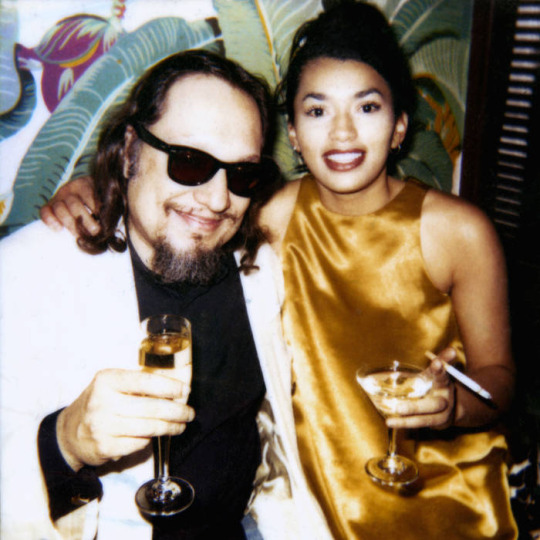
As far as I can tell, Larry “Ratso” Sloman is a relatively famous celebrity writer who, in his later years, has decided to try his hand at being contemporary-folk influenced singer-songwriter. Clearly quite heavily indebted to almost anyone who pioneered the genre, namely Leonard Cohen, Bob Dylan, Townes Van Zandt etc. Even Nick Cave, who pops up somewhere here to give a half-assed, overshadowing performance, can be heard in Sloman’s Cohen mimicking. Sloman credits Bob Dylan and John Cale on every track (though he mostly covers Cale), though seems to try his hand at their material with a distinctly Cohen-esque angle. Stubborn Heart, while enjoyable and well-made, is never really much more than a imitative covers record by someone who can apparently afford to do so.
Pick: ‘Our Lady of Light’
#ratso#stubborn heart#2019#larry sloman#larry ratso sloman#contemporary folk#singer songwriter#music review#music#review
0 notes
Photo

Book 38,2017: 'Mike Tyson,Undisputed Truth,My Autobiography' by Mike Tyson and Larry Sloman. Need I add anything? I mean it's about Iron Mike..you get me! Thoroughly enjoyed this. Weltanschauung!
2 notes
·
View notes
Photo
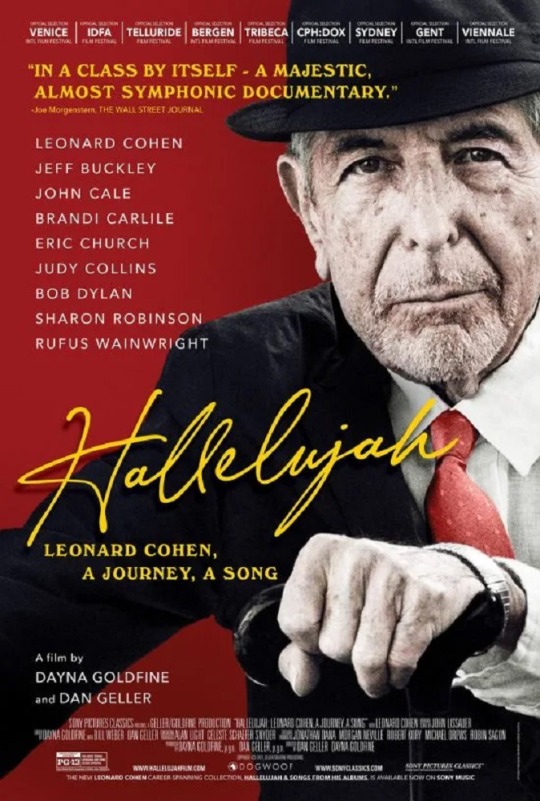
HALLELUJAH: LEONARD COHEN, A JOURNEY, A SONG (2022)
Featuring Brandi Carlile, Eric Church, Judy Collins, Sharon Robinson, Regina Spektor, Rufus Wainwright, Nancy Bacal, Steve Berkowitz, Adrienne Clarkson, Clive Davis, Shayne Doyle, Susan Feldman, Rabbi Mordecai Finley, Glen Hansard, Dominique Issermann, Vicky Jenson, Myles Kennedy, John Lissauer, Janine Dreyer Nichols, Amanda Palmer, Larry 'Ratso' Sloman, Joan Wasser, Hal Willner and archival footage of Leonard Cohen, John Cale, Bob Dylan and Jeff Buckley.
Directed by Daniel Geller and Dayna Goldfine.
Distributed by Sony Pictures Classics. 115 minutes. Rated PG-13.
The Documentary Hallelujah: Leonard Cohen, A Journey, A Song Celebrates The Late Singer/Songwriter’s Poetic Hit
I’ll admit it. It wasn’t until the 82-year-old Leonard Cohen had died in 2016 (November 7th) did I really start paying attention to the fantastic quality of his music and lyrics. There were songs and albums that I acknowledged but, somehow, I didn’t quite get the body and breadth of this Canadian Jewish poet. The richness of his songs and the substance of his lyrics hadn’t fully caught my attention until after his death.
I never made it to a concert nor had an opportunity to interview him. I only encountered him tangentially. There was an interactive exhibit dedicated to Cohen’s life and career which opened on November 9, 2017, at Montreal's contemporary art museum (MAC) entitled "Leonard Cohen: Une Brèche en Toute Chose/A Crack in Everything.” The exhibit had been in the works for several years prior to the Montreal born artist’s death, part of the official program of Montreal's 375th anniversary. It broke museum's attendance records in its five-month run. Then it embarked on an international tour, opening in New York City at the Jewish Museum in April 2019 — and I saw it shortly before it left NYC spending hours there.
Thanks to guitarist/sound stylist Gary Lucas, I came to understand Cohen’s impact on other musicians. Lucas often spoke of the late Jeff Buckley —his former collaborator and one-time band mate. They worked on some songs together that appeared on Grace, Buckley’s one full studio-produced release. And the singer/songwriter really got established posthumously through a powerful and touching rendition of “Hallelujah,” Cohen’s most enduring song.
I had listened to Buckley’s version numerous times and, though I appreciated his heartfelt rendition, I didn't realize the huge back story to that song. Originally released on Various Positions — Cohen’s 1984 album — “Hallelujah” achieved little initial success. Then it developed a growing audience after achieving popular and critical acclaim through a version recorded by former Velvet Underground founder John Cale in 1991 for I'm Your Fan, a Cohen tribute album. That inspired Buckley to record his version of Cale's take in 1994.
I knew of author Alan Light’s 2012 book, The Holy Or the Broken: Leonard Cohen, Jeff Buckley, and the Unlikely Ascent of ‘Hallelujah.’ But it wasn’t until I recently saw ‘Hallelujah:’ Leonard Cohen, A Journey, A Song at the Walter Reade Theater (part of Film at Lincoln Center), that I came to understand what I’d been missing. Building on Light’s book, the feature doc spotlights Cohen in a way that offers a perspective on an artist who in many ways was as creatively significant as Nobel Prize winner Bob Dylan (who did a live version of the song himself and was friends with Cohen). As Light said somewhere, Cohen's "approach to language and craft felt unlike the work of anybody else. The sound was rooted in poetry and literature because he studied as a poet and a novelist first."
Cohen kept changing the song, eventually crafting as many as 180 possible verses to choose from, recorded several iterations (some more sexually suggestive than others) and performed variations of it live. After an edited version of Cale’s take was featured in the 2001 film Shrek, it landed on the multi-platinum-selling soundtrack release. Many other arrangements of “Hallelujah” have been performed in recordings and in concert, with over 300 versions known. The song has since been used in other film and television soundtracks and televised talent contests such as American Idol. Following Cohen's death in November 2016, “Hallelujah” enjoyed renewed interest. It appeared on many international singles charts and entered the American Billboard Hot 100 for the first time.
But the film — directed by Daniel Geller and Dayna Goldfire — is much more than simply detailing the evolution of the song and Various Positions — the album it first appeared on. Cohen’s seventh studio album was released in December 1984 (and February 1985) and marked not only his turn to a more modern sound with synthesizers, but also featured Jennifer Warnes’ harmonies and backing vocals — she’s credited equally to Cohen as vocalist on all of the tracks.
Produced by John Lissauer, the album was a glistening display of Cohen at his basic best after having done 1977's Death of a Ladies' Man, an over-produced recording with Phil Spector (Mr. Wall of Sound). Although it featured a more contemporary approach compared with the singer's previous LPs, Columbia President Walter Yetnikoff didn’t think it was commercial enough and refused to release it in the States. That stuck in Cohen’s craw and affected his work for a long time.
All of this and much more is effectively detailed in the film. Interviews with those who knew him well such as Judy Collins (who popularized him through her 1966 cover of “Suzanne”) pop music chronicler Larry “Ratso” Sloman, Lissauer and others help establish who Cohen was and what informed his work such as his observant Jewish roots and the many women he had been with.
Said one of the film's co-creators in an interview, “Cohen addressed the deepest of our human concerns about longing for connection and some sort of hope, transcendence and acknowledgment of the difficulties of life."
As docs go, this one really does the job. While focused on the song as a doorway into who Cohen was, it sets us up for a fully realized story about an important creator.
Brad Balfour
Copyright ©2022 PopEntertainment.com. All rights reserved. Posted: July 2, 2022.
youtube
1 note
·
View note